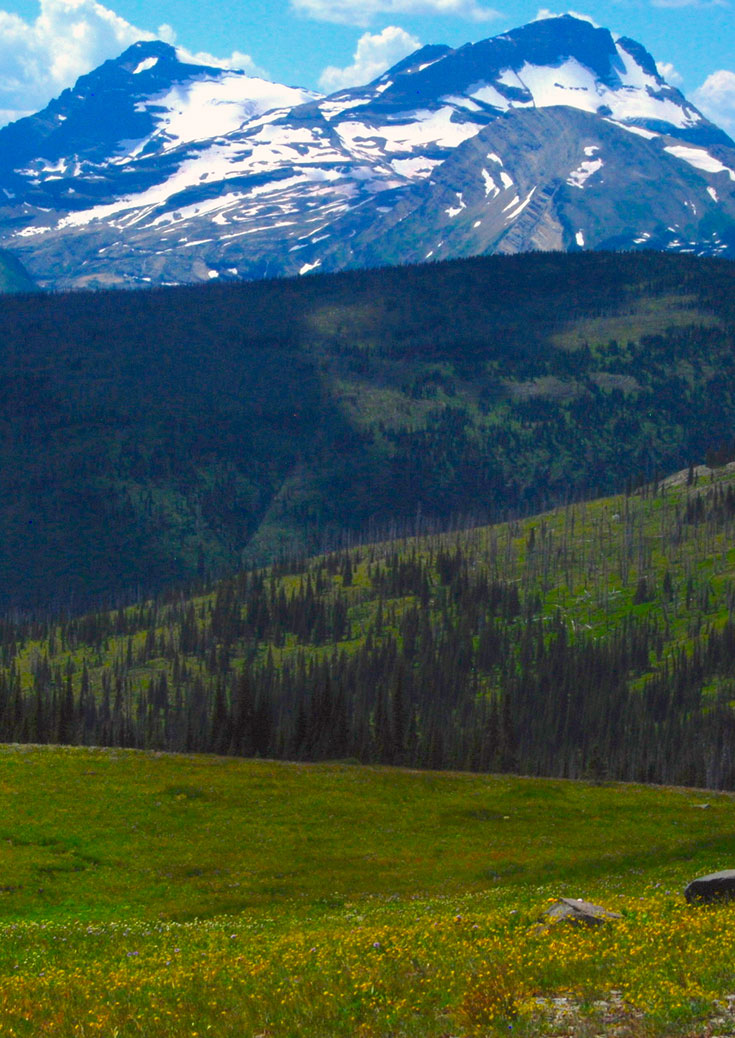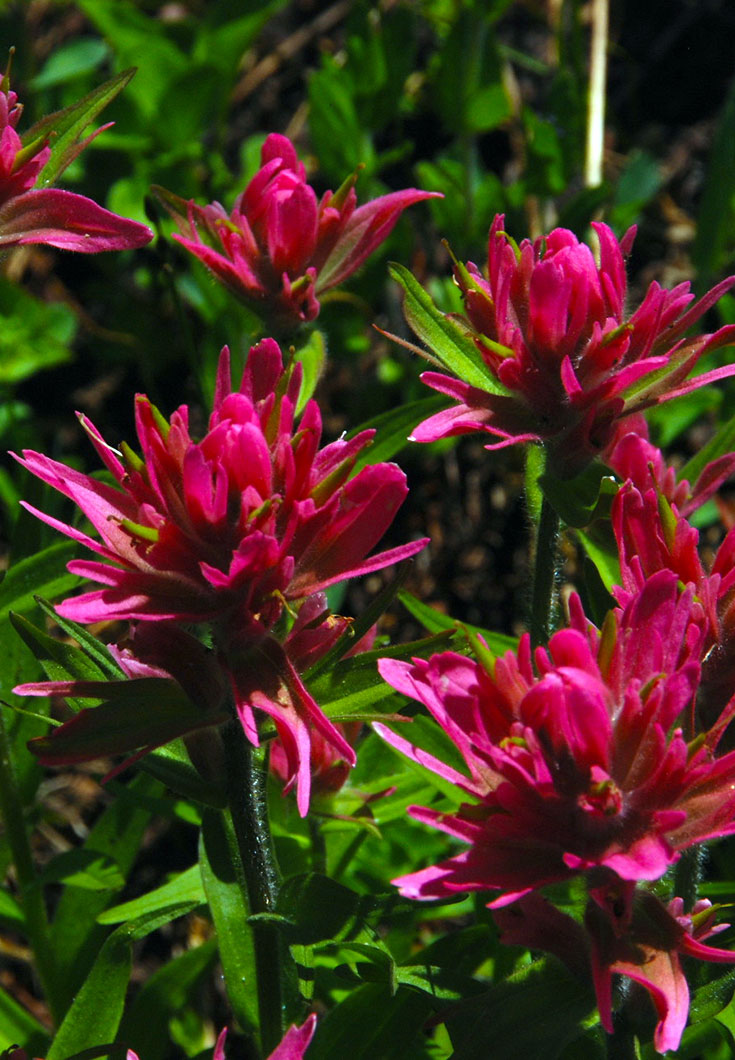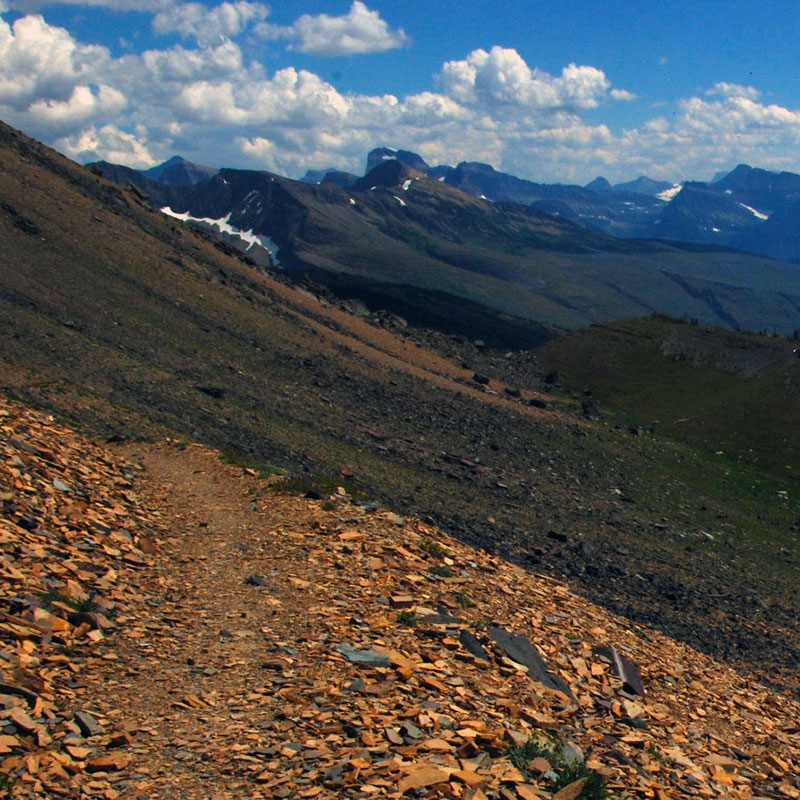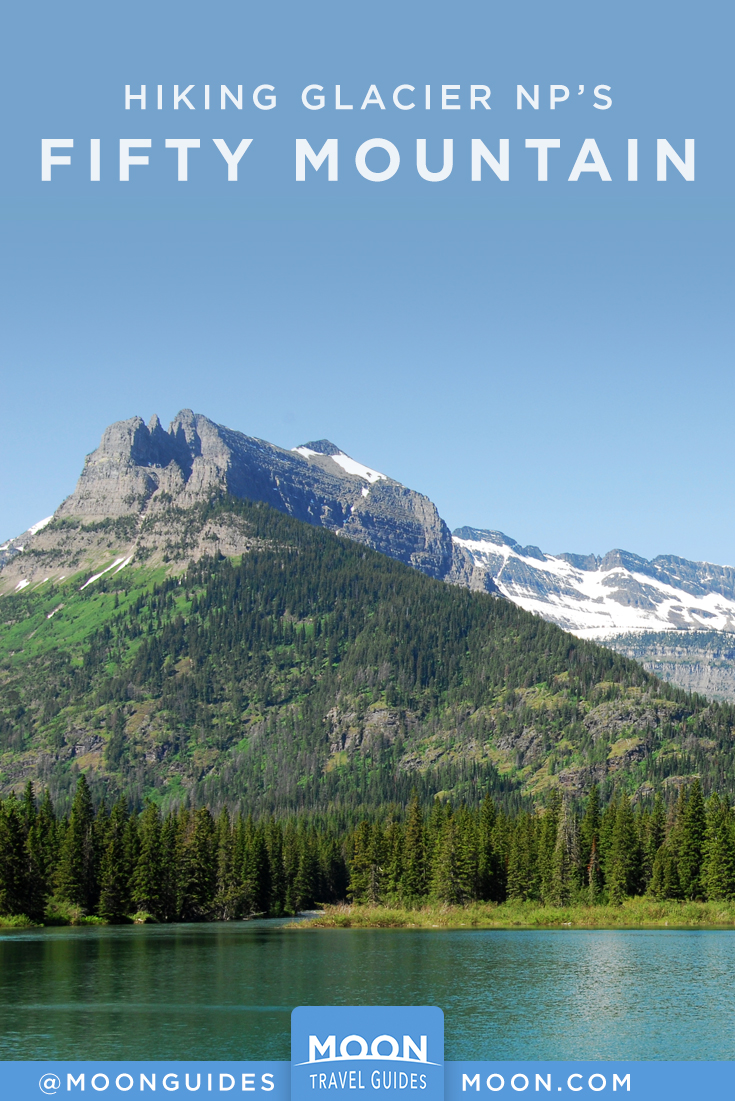Hiking Glacier National Park’s Fifty Mountain
Fifty Mountain supposedly acquired its name from the number of snow-capped peaks visible from its immense wildflower meadows. While fifty might be a slight exaggeration, this remote backpacker heaven in Glacier National Park has an unrivaled 360-degree view that takes in a plethora of peaks.
The name ‘Fifty Mountain’ designates the backcountry campground and wildflower meadows rather than a particular peak. The Livingston Range rises to the west, dominated by Vulture Peak and its two glaciers. Steep-walled Cathedral Mountain leads a long parade of mountains marching south along the Continental Divide.

As the snow melts in the meadows, yellow glacier lilies bloom. Midsummer, the lilies give way to clusters of red paintbrush, white valerian, and purple fleabane. In late August, the meadows take on golds dotted with reds from tiny huckleberry bushes that often attract grizzlies nibbling the sweet, purple berries.
Fifty Mountain is the site of an old tent camp on the Northern Circle horseback tour in the 1920s, and a stone foundation remains from a hiker shelter at the north end of the meadows. A fire ravaged the backcountry camp in 1998, burning chunks of trees, which now stand as silver sentinels amid surviving greenery. Six campsites tuck into the trees, and a food preparation area contains two bear boxes and food hanging poles. An adjacent seasonal stream supplies water, although it can dry up by late August. An outhouse sits down the hill.

From the campground, a 1.5-mile jaunt climbs to a lofty viewpoint. The perch of Sue Lake Overlook adds on more summits, including Mt. Merritt and Mt. Cleveland, two of Glacier’s highest peaks. From the trail the view extends south to Logan Pass and the park’s central mountains. Fifty Mountain rivals crowded Logan Pass with alpine beauty, but offers solitude and quiet only to backpackers who make the long trek.
Getting to Fifty Mountain
Fifty Mountain has a short season of snow-free access. On early snowmelt years, backpackers can camp by early July. Following heavier winters, snow lingers in the campground until late July. By late September, snow returns to blanket the meadows for winter.
The shortest routes to Fifty Mountain come from Goat Haunt (10.5 miles via Waterton Lakes National Park) or Packers Roost (12 miles). Strong hikers can get there in one day, but most will break up the route with camping at an intermediate backcountry site. These can also be exit routes from Fifty Mountain to create point-to-point hikes.
The most dramatic access starts at Logan Pass. For 19.5-miles, the Highline Trail hugs the Continental Divide, skittering above tree line for stunning vistas. Most backpackers camp en route at Granite Park, completing loops in 3-4 days. Due to the high-angled Ahern snowdrift and the dangerous Cattle Queen snowbridge, this route usually opens in late July. Anyone hiking it earlier must be ready to skirt these obstacles via cliffs.

The historical route to Fifty Mountain follows the Northern Circle. The classic 5- to 7-day, 53-mile trek starts from Many Glacier. It stitches together high points of Ptarmigan Tunnel, Stoney Indian Pass, Fifty Mountain, and Swiftcurrent Pass with multiple lakes through the Belly River drainages.
Permits ($7 pp per night) are required to camp in Glacier’s backcountry. Pick them up 24 hours in advance at the Apgar Backcountry Office or a visitor center. For Fifty Mountain trips launching on Aug. 1 or later, get advanced reservations ($40) online starting mid-March.
Fifty Mountain delivers sheer rugged grandeur. Grab hiking boots and backpack to spend a day or two in its wildflower meadows surrounded by glacier-carved peaks.

Related Travel Guide
Pin For Later
